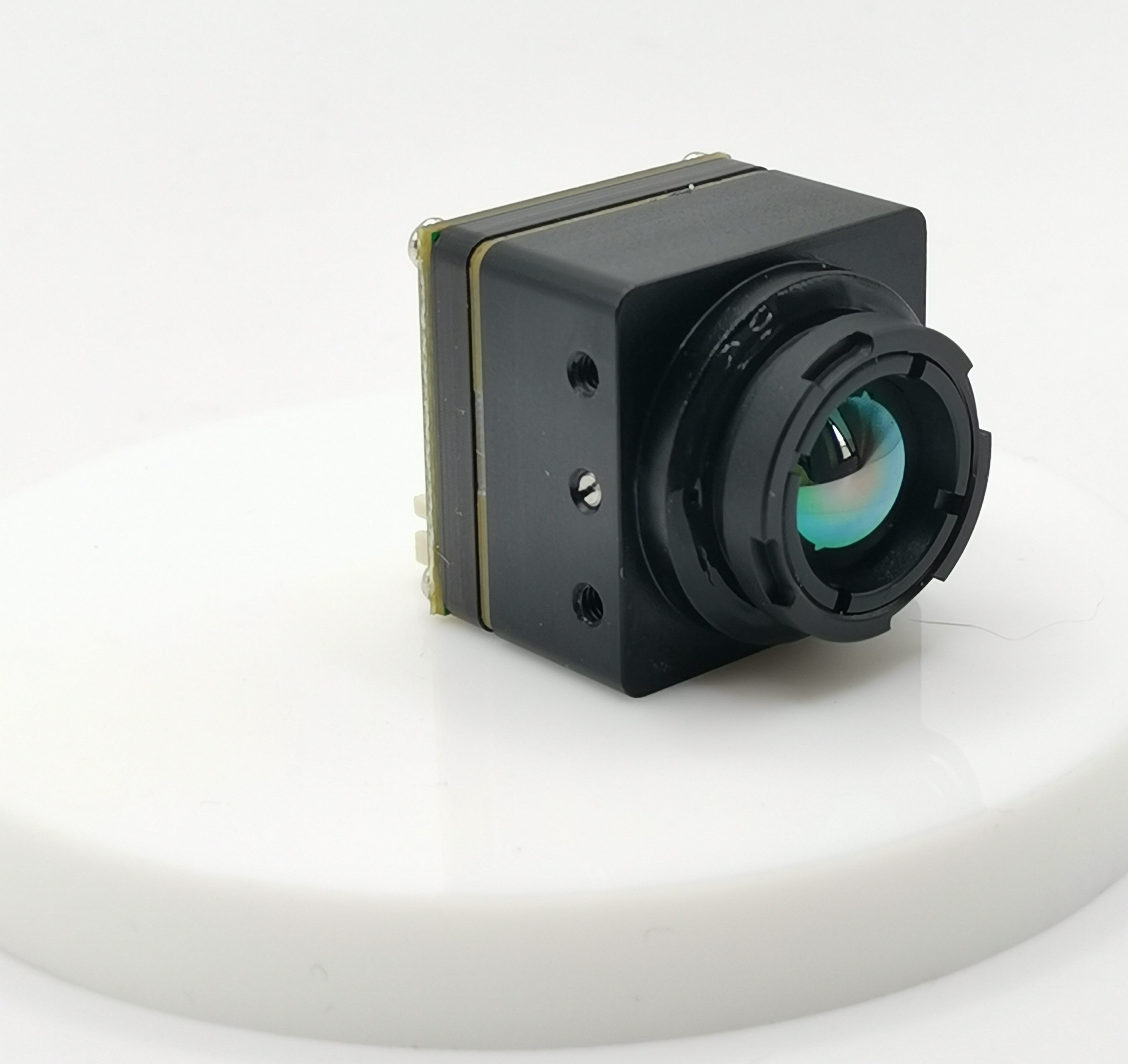How to Choose the Best FPV Thermal Camera for Drones with iSun Analog Technology

Understanding FPV Thermal Cameras
FPV thermal cameras, also known as First Person View thermal cameras, are advanced imaging devices that detect and capture heat signatures from various objects and environments. These cameras utilize thermal imaging technology to visualize temperature differences and present the data in the form of a visible image. Unlike traditional cameras, FPV thermal cameras do not rely on visible light but instead focus on capturing infrared radiation emitted by objects.
The Role of FPV Thermal Cameras in Drone Operations
FPV thermal cameras play a crucial role in enhancing the capabilities of drones for various applications. By integrating FPV thermal cameras with drones, operators can effectively conduct aerial inspections, search and rescue missions, surveillance operations, and environmental monitoring. These cameras enable drone operators to detect heat sources, identify hotspots, and analyze temperature differentials in real-time from an aerial perspective. This capability is particularly valuable in scenarios where visual observation may be limited or ineffective due to low light conditions or environmental obstructions.
Key Features of the Best Kind of Thermal Camera for Drones
When selecting the best kind of thermal camera for drones, it's essential to consider several key features that can significantly impact performance and usability. These features include resolution and sensitivity, weight and size considerations, as well as real-time imaging capabilities.
Resolution and Sensitivity
The resolution of a thermal camera refers to the number of pixels it uses to create an image. A higher resolution allows for more detailed and clearer thermal images, enabling drone operators to discern smaller objects or temperature variations from a distance. Additionally, sensitivity in thermal imaging determines the camera's ability to detect minimal temperature differences accurately. This is crucial for applications where precise temperature variances need to be identified, such as in industrial inspections or search and rescue missions.
Weight and Size Considerations
The importance of a lightweight design cannot be overstated when choosing a thermal camera for drones. A lightweight camera contributes to the overall payload efficiency of the drone, allowing for longer flight times and increased maneuverability. Furthermore, the size of the thermal camera is critical for seamless integration with drones. Compact designs ensure minimal impact on the drone's aerodynamics while providing ample space for other essential equipment.
Real-Time Imaging Capabilities
Real-time data is invaluable during drone operations, especially in scenarios where immediate decision-making is required. The ability to capture and analyze thermal data in real time provides operators with actionable insights into heat differentials, hotspots, or anomalies within the environment. With iSun Analog technology, this capability is further enhanced through advanced processing algorithms that optimize real-time imaging performance, ensuring swift and accurate data interpretation during flights.
Additional Considerations
Integration with Drone Systems: Compatibility with various drone models and systems is crucial for seamless integration.
Durability: The best thermal cameras are built to withstand challenging environmental conditions without compromising performance.
User-Friendly Interface: Intuitive controls and user interfaces enhance operational efficiency during drone missions.
Why iSun Analog Technology Makes a Difference
The Basics of iSun Analog Technology
Before delving into the advantages and applications of iSun analog technology in FPV thermal cameras, it's essential to understand the fundamental principles that underpin this innovative technology. iSun analog is a cutting-edge thermal imaging technology that leverages advanced analog processing algorithms to enhance the overall performance and capabilities of thermal cameras. Unlike traditional digital processing methods, iSun analog optimizes the conversion of infrared radiation into visible thermal images with unparalleled efficiency and accuracy.
Advantages of iSun Analog in FPV Thermal Cameras
Enhanced Image Quality
The integration of iSun analog technology in FPV thermal cameras results in a significant enhancement in image quality. By utilizing sophisticated analog processing techniques, these cameras can capture and render thermal images with exceptional clarity and detail. The enhanced image quality enables drone operators to discern subtle temperature differentials and heat signatures with remarkable precision, empowering them to make informed decisions during critical missions.
Reliability and Accuracy
One of the primary advantages of iSun analog technology is its unparalleled reliability and accuracy in thermal imaging. The advanced analog processing algorithms ensure consistent and dependable performance, even in dynamic environmental conditions or challenging operational scenarios. This level of reliability is paramount for drone operators who rely on accurate thermal data for tasks such as search and rescue missions, infrastructure inspections, and wildlife monitoring.
iSun Analog FPV Thermal Cameras in Action
Case Studies and Success Stories
Several real-world case studies demonstrate the tangible impact of iSun analog FPV thermal cameras on diverse applications. In search and rescue operations, these cameras have played a pivotal role in swiftly identifying heat signatures from individuals stranded in remote or inaccessible locations, leading to successful rescue missions. Furthermore, industrial inspections have benefited from the use of iSun analog technology, enabling inspectors to detect anomalies in machinery, electrical systems, and infrastructure with unparalleled efficiency.
Personal Experience with iSun Analog Technology
As an avid drone enthusiast and professional aerial photographer, I have had the opportunity to experience firsthand the transformative capabilities of iSun analog FPV thermal cameras. During a recent environmental monitoring project, I relied on an iSun-equipped thermal camera to capture detailed thermal images of wildlife habitats without disturbing their natural behavior. The exceptional image quality provided by the camera allowed me to analyze temperature differentials within the ecosystem accurately.
Additional Considerations
Integration with Drone Systems: Compatibility with various drone models and systems is crucial for seamless integration.
Durability: The best thermal cameras are built to withstand challenging environmental conditions without compromising performance.
User-Friendly Interface: Intuitive controls and user interfaces enhance operational efficiency during drone missions.
Making Your Choice: Tips and Considerations
When it comes to choosing the best FPV thermal camera for your drone, several tips and considerations can help you make an informed decision. Assessing your needs and applications, comparing models and brands, as well as budgeting for quality are essential factors to consider in this process.
Assessing Your Needs and Applications
Before investing in an FPV thermal camera, it's crucial to assess your specific needs and intended applications. Consider the environments in which you will be operating your drone, such as industrial settings, search and rescue missions, or environmental monitoring. Understanding the temperature differentials you need to detect and the level of detail required in thermal imaging will guide you in selecting a camera with the appropriate resolution and sensitivity.
Comparing Models and Brands
When comparing different models and brands of FPV thermal cameras, there are key aspects to evaluate. Firstly, scrutinize the specifications of each camera, paying close attention to factors such as resolution, sensitivity, real-time imaging capabilities, and compatibility with your drone system. Additionally, reading reviews from industry experts and seeking recommendations from experienced drone operators can provide valuable insights into the performance and reliability of various models.
What to Look for in Specifications
Resolution: Ensure that the camera's resolution meets your requirements for capturing detailed thermal images.
Sensitivity: Look for a high level of sensitivity to accurately detect temperature variations.
Real-Time Imaging: Check if the camera offers real-time imaging capabilities for immediate data analysis during flights.
Reading Reviews and Seeking Recommendations
Researching reviews from reputable sources can offer comprehensive perspectives on different FPV thermal cameras. Additionally, seeking recommendations from professionals who have hands-on experience with these cameras can provide practical insights into their performance under varying conditions.
Budgeting for Quality
While budget constraints are a consideration for many drone operators, it's important to prioritize quality when investing in an FPV thermal camera. Understanding the relationship between price and performance is crucial; a higher price may reflect advanced features and superior image quality. However, finding the best value involves striking a balance between cost-effectiveness and meeting your specific operational requirements.
Understanding Price vs. Performance
Consider how the price aligns with the overall performance of the thermal camera. Evaluate whether higher-priced models offer significant advantages in terms of image clarity, real-time capabilities, durability, and compatibility with your drone system.
Finding the Best Value
Finding the best value entails weighing the features offered by different models against their respective prices. Look for cameras that not only meet your technical needs but also provide reliability, ease of use, and long-term durability without exceeding your budgetary constraints.
Wrapping Up
In conclusion, selecting the right FPV Thermal Camera for your drone is a crucial decision that can significantly impact the success of your aerial missions. By prioritizing key features such as resolution, sensitivity, real-time imaging capabilities, and the integration of iSun Analog technology, drone operators can enhance their thermal imaging capabilities and make informed decisions during flights.
Recap of Key Points
Throughout this blog, we have explored the fundamental aspects of FPV thermal cameras and highlighted the essential features to consider when choosing the best thermal camera for drones. From understanding the role of FPV thermal cameras in drone operations to delving into the advantages of iSun Analog technology, we have provided insights to empower drone enthusiasts and professionals in making informed decisions.
When evaluating different models and brands, it's crucial to assess specifications such as resolution, sensitivity, and real-time imaging capabilities while considering compatibility with your specific drone system. Additionally, budgeting for quality involves striking a balance between cost-effectiveness and meeting operational requirements.
Encouragement to Explore iSun Analog FPV Thermal Cameras
As technology continues to advance, the integration of iSun Analog technology in FPV thermal cameras represents a significant leap forward in thermal imaging capabilities. We encourage you to explore the potential of iSun Analog FPV Thermal Cameras for your drone operations. Whether you are embarking on search and rescue missions, conducting industrial inspections, or capturing stunning aerial thermal imagery, iSun Analog technology can elevate your capabilities and provide valuable insights from a new perspective.
Embrace innovation and discover how iSun Analog FPV Thermal Cameras can unlock new possibilities in aerial thermography.
See Also
Selecting the Optimal Drone Thermal Imaging Camera for FPV: iSun Analog Guide
Selecting the Top Analog FPV Thermal Camera for Drones with Thermal Tech
Maximizing the Potential of isun Analog FPV Thermal Cameras for Drones
Selecting the Ideal Thermal Camera for Drone with FPV Tech
The Best Drone-Mountable Thermal Cameras for FPV with iSun Analog Tech
Contact Us: Ms. Coco Huang
E-mail: sales@iasun.cn
WhatsApp/Wechat: +86 13510421923

